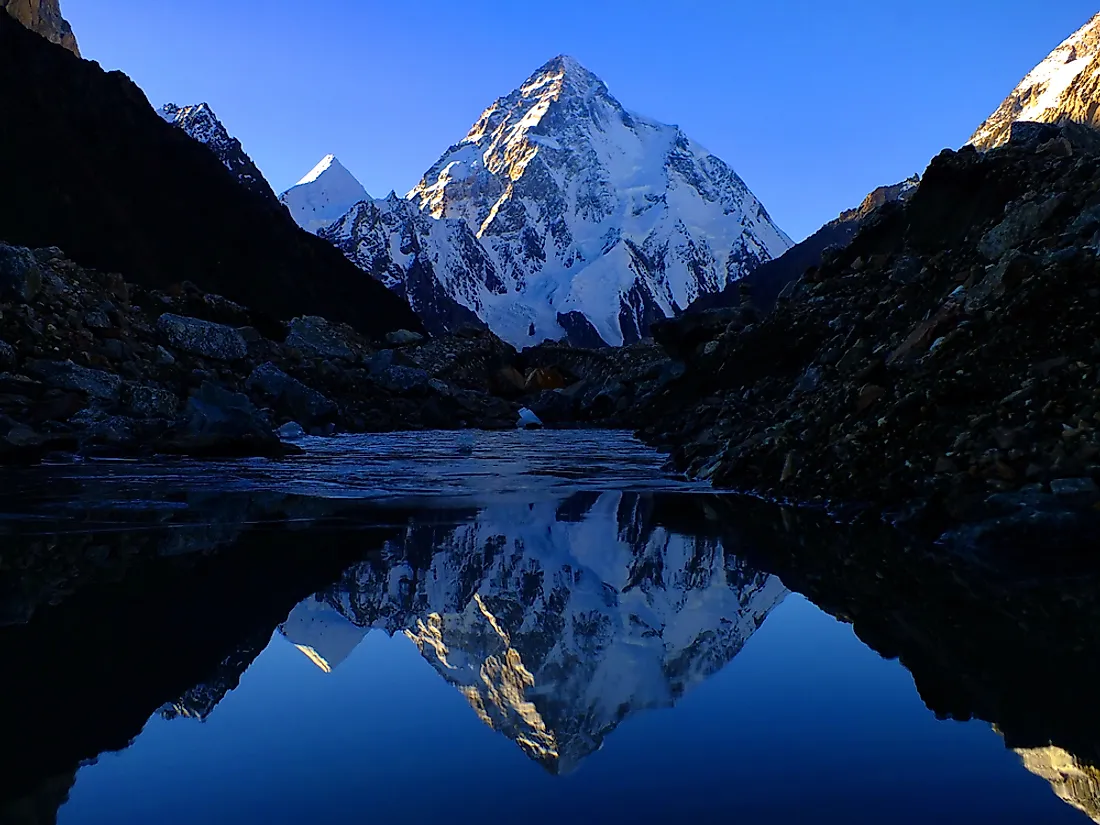What is K2?

K2 is the name of the world’s second highest mountain peak after Mount Everest. It is also known as Chhogori, Qogir, Ketu, or Mount Godwin-Austen and has an altitude of 28,251 feet (8,611 meters). The mountain, which is a part of the Karakoram Range, is strategically located on the Chinese-Pakistani border. The mountain lies partly in the Tashkurgan Tajik Autonomous County in western Xinjiang, China and partly in Baltistan, in the Gilgit–Baltistan region of northern Pakistan.
K2 is associated with high fatality rates among climbers who dare to climb its treacherous peak, and therefore sometimes earns the nickname "savage mountain". The first successful ascent to the summit of K2 was accomplished on July 31st, 1954 by two Italian climbers, Lino Lacedelli and Achille Compagnoni. Since then, numerous attempts have been made to climb K2, with many failures and few successes. As per statistics, for every four persons who summit the mountain, one person dies. The violent weather and harsh topography of the mountain are held responsible for the large number of deaths associated with its climbing.
Name Origin
The name of the mountain, "K2", is derived from the Karakoram Range to which it belongs. In 1856, a British surveyor, Thomas Montgomerie, while conducting his exploration and inspection of mountains in the Karakoram Range, named all the peaks with an initial K and accompanying number determined by order of survey. K2, being the second peak surveyed by him, was designated with the number 2. Over the years, though the other peaks have been renamed, the name of K2 has remained unchanged. Several other names, many of which were used by locals long before British entry into the region, are also used to refer to K2.
Climbing K2
K2 is a currently revered and feared by mountaineers all across the world as one of the most challenging mountains in the world for climbing. Still, the breathtaking beauty of the mountain, and the lure of achieving the impossible climb, draws a large number of daredevils to the mountain each year. K2 also forms a natural, and nearly impassable, boundary between the two countries of China and Pakistan, acting as the natural "border guard" for both of these countries. The mountain also hosts a large number of glaciers, like the Godwin-Austen Glacier and Baltoro Glacier, the melt-water of which act as sorts of tributaries which feed rivers like the Shigar River, itself a tributary of the mighty Indus River.
Vegetation and Ecosystem
The lower valleys of the Karakoram Range receive little precipitation, and thus support vegetation adapted to the arid climate of the region. Patches of human settlements based here use melting water from glaciers to irrigate their cultivated fields. Animal grazing is also an important part of the livelihoods of these people. The natural vegetation of this lowland region is comprised by shrub-lands and woodlands. Higher up in the mountains, until a height of around 10,000 feet, deciduous trees and shrubs like willow, poplar, and oleander populate the rocky mountain slopes near the are's watercourses, which are followed by a coniferous vegetation belt comprising of trees like juniper at higher altitudes. However, in the snow-capped peaks of the Karakoram Range, including K2, permanent ice and snow cover discourages the growth of any life form on the mountain slopes. Fauna of the Karakoram Range mountain ecosystems include herbivores like Ladakh urials, Argals, and Siberian ibexes, alongside such endangered predators as Snow leopards, lynxes, and brown bears. Avian fauna of the region includes Golden eagles and Himalayan griffons.
The extreme dangers posed by K2 limit the number of mountaineers attempting to climb this mountain, leaving the K2 as one of the most pristine and unspoiled habitats in the world. However, some amount of pollution is still induced by human waste in the form of human excreta, empty oxygen cylinders, remnants of camps, and even dead human bodies left on the mountain by climbing endeavors. Besides climbing expeditions, other forms of human intervention and exploitation of the natural mountain ecosystems, including those in the form of the killing of the native animal species therein for meat and fur, also threaten to endanger the survival of these species.











